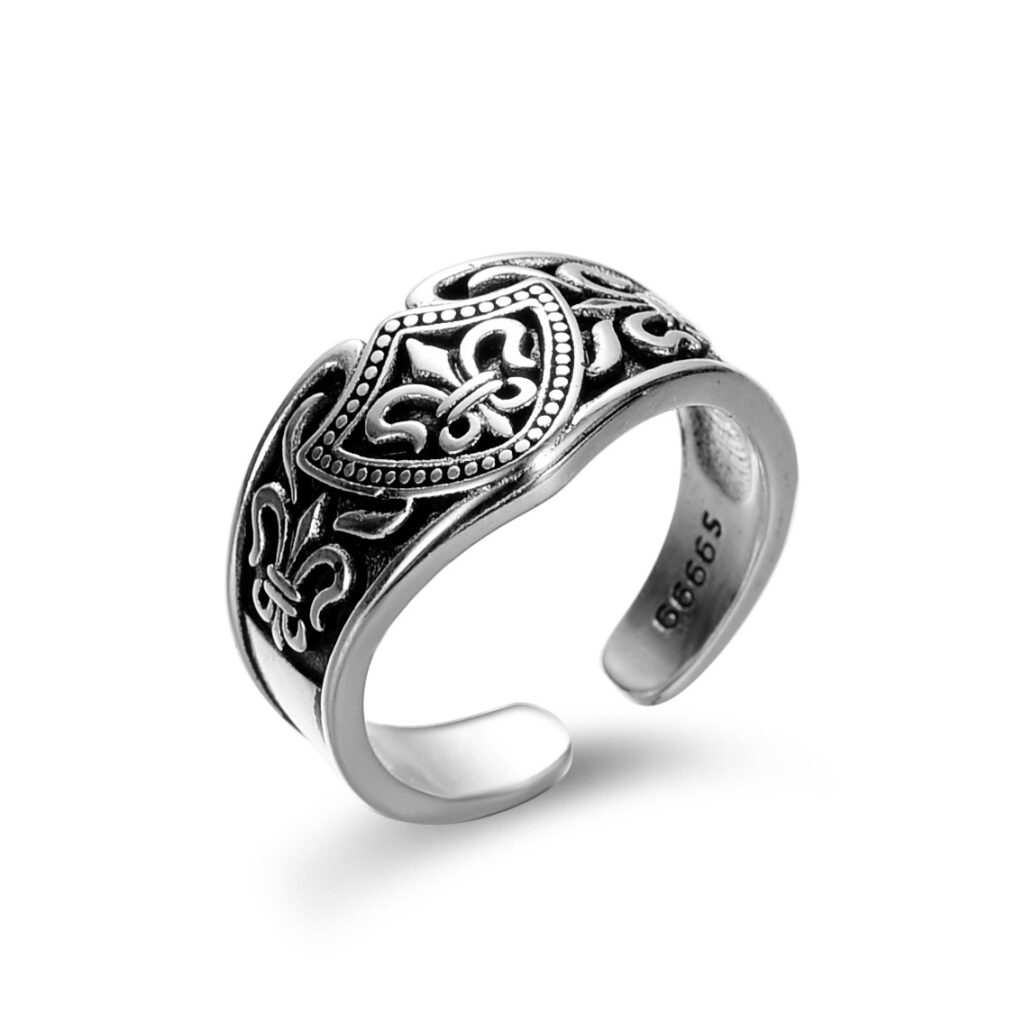Comment produire des anneaux en laiton antiques: Un guide de fabrication complet
Introduction
Antique brass rings have gained significant popularity in the jewelry market due to their vintage appeal, charme robuste, et esthétique intemporelle. Laiton, un alliage de cuivre et de zinc, est un excellent matériau pour créer des, oxydé, et bagues aux finitions antiques. Ce guide fournit un step-by-step process for manufacturing antique brass rings, revêtement:

✔ Sélection des matériaux & properties of brass
✔ Conception & prototyping techniques
✔ Fabrication methods (fonderie, forgeage, gravure)
✔ Aging & patina techniques
✔ Finition & sealing for durability
✔ Contrôle de qualité & conditionnement
À la fin, you’ll understand how to produce high-quality antique brass rings for retail, de gros, or custom orders.
1. Understanding Brass as a Jewelry Material
1.1 Composition of Brass
-
Primary Elements: Cuivre (60-80%) + Zinc (20-40%)
-
Variantes:
-
Laiton jaune (70% Cu, 30% Zn) – Common for jewelry
-
Laiton rouge (85% Cu, 15% Zn) – Warmer, more copper-rich
-
Nickel-Free Brass (Hypoallergenic alternative)
-
1.2 Why Brass is Ideal for Antique Rings
✔ Malleability – Easy to shape, graver, et texture
✔ Natural Oxidation – Develops a rich patina over time
✔ Rentable – Moins cher que l’argent ou l’or
✔ Takes Well to Aging Techniques – Can be artificially distressed
1.3 Potential Challenges
-
Ternissement – Requires sealing to prevent excessive oxidation
-
Allergic Reactions – Some brass contains nickel (opt for nickel-free versions)
2. Conception & Prototyping Antique Brass Rings
2.1 Esquisse à la main & Modélisation CAO
-
Hand-drawn designs → For organic, rustic textures
-
GOUJAT (Conception assistée par ordinateur) → For precise geometric or engraved patterns
2.2 3D Impression & Wax Prototyping
-
Resin/Wax models → Test fit, forme, et les détails
-
Ajustements → Modify thickness, band width, et texture
3. Manufacturing Process for Antique Brass Rings
3.1 Méthode 1: Fonderie (Meilleur pour les conceptions détaillées)
Pas 1: Create a Master Model
-
Carve from wax or 3D print a resin prototype
Pas 2: Fabrication de moisissures
-
Casting d'investissement:
-
Wax model → Plaster mold → Molten brass poured in
-
Pas 3: Post-Casting Finishing
-
Dépôt → Remove casting seams
-
Sable → Adds a matte, weathered texture
3.2 Méthode 2: Fabrication de mains (Forgeage & Formation)
Pas 1: Cutting the Brass Strip
-
Use a jeweler’s saw for custom widths
Pas 2: Shaping the Ring Band
-
Recuit (Heat to soften) → Bend around a mandrel
-
Soudure (If needed for closure)
Pas 3: Martelage & Texturation
-
Ball-peen hammer → Creates dents & imperfections
-
Chiseling → Adds engraved details
4. Aging & Patina Techniques for an Antique Look
4.1 Chemical Oxidation (Foie de Soufre)
-
Processus:
-
Dip brass ring in liver of sulfur solution
-
Creates noirci, antique effect
-
Polish highlights with steel wool
-
4.2 Vinegar & Salt Aging (Natural Patina)
-
Processus:
-
Soak brass in vinegar + salt solution (30 mins to 24 heures)
-
Produces greenish-blue verdigris effect
-
4.3 Heat Aging (Torch Distressing)
-
Processus:
-
Use a butane torch to selectively darken areas
-
Creates inégal, rustic discoloration
-
4.4 Mechanical Distressing (Sandpaper, Files, Steel Wool)
-
Scratch & Scuff → Simulates years of wear
-
Partial Polishing → Leaves some areas shiny
5. Finition & Sealing the Antique Brass Ring
5.1 Techniques de polissage
-
High-Shine Finish → Buff with a polishing wheel
-
Finition mate → Sandblast or use Scotch-Brite pads
5.2 Revêtements protecteurs (To Slow Tarnishing)
✔ Beeswax or Renaissance Wax → Natural, matte protection
✔ Lacquer Spray → Clear coat for long-term shine
✔ Jewelry Sealants – E.g., ProtectaClear
6. Contrôle de qualité & Conditionnement
6.1 Liste de contrôle d'inspection
✔ Pas de bords tranchants (Dépôt & smoothing complete)
✔ Patina consistency (No unintended blotches)
✔ Ring size accuracy (Test on mandrel)
6.2 Packaging for Retail
-
Pochettes anti-franchises (Prevent oxidation during storage)
-
Branded Boxes (Présentation de luxe)
7. Tendances du marché & Opportunités d'affaires
7.1 Popular Antique Brass Ring Styles (2024 Tendances)
-
Signet Rings – Engraved initials or symbols
-
Hammered Bands – Hand-textured, rugged look
-
Mixed-Metal Rings – Brass + Copper or Silver
7.2 Selling Your Antique Brass Rings
-
Etsy, Amazone, eBay – For indie brands
-
Wholesale to Boutiques – Vintage & boho stores
-
Custom Orders – Personalized engravings
8. Conclusion: Mastering Antique Brass Ring Production
Producing antique brass rings involves:
✔ Choosing the right brass alloy
✔ Casting or hand-fabricating the ring
✔ Applying patina & distressing techniques
✔ Sealing for durability
En suivant ces étapes, tu peux créer unique, vintage-style brass rings that appeal to customers seeking rustic, heirloom-quality jewelry.
Want a downloadable checklist for antique brass ring production? Let me know how I can refine this guide for your needs!
